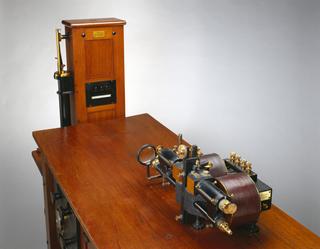
Willem Einthoven 1860 - 1927
Willem Einthoven was a Dutch doctor and physiologist, best known for designing the string galvanometer. This instrument detected and recorded visual traces of the heart’s electrical activity. During the 20th century, this technique, known as ECG, diagnosed heart conditions.
Einthoven studied as a doctor at the University of Utrecht. In 1886 he became Professor of Physiology at the University of Leiden. Like other medical scientists he became interested in devising instruments to measure body function.
British physiologist Augustus Waller had devised a means to record traces of the heart’s electrical activity. An inspired Einthoven developed his own instrument in the early 1900s.
His first string galvanometer was a large, complex device requiring five people to operate. The ‘string’ was an extremely fine quartz crystal able to conduct electricity. Electrical impulses from heart contractions were transmitted to the string via electrodes. ECG now uses electrodes that attach to the skin’s surface. Einthoven’s electrodes were buckets of salt water which patients put their limbs into. As the string responded to each impulse, it obstructed a beam of light and recorded wave-like shadows on photographic paper. This was known as a trace.
Einthoven used traces to describe how different heart disorders gave different visual patterns. He won the 1924 Nobel Prize in Medicine for his machine and heart research.
